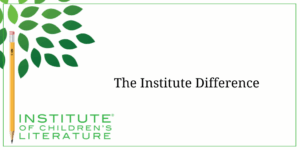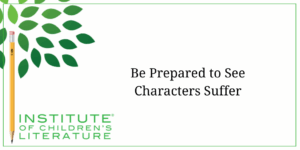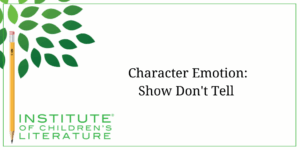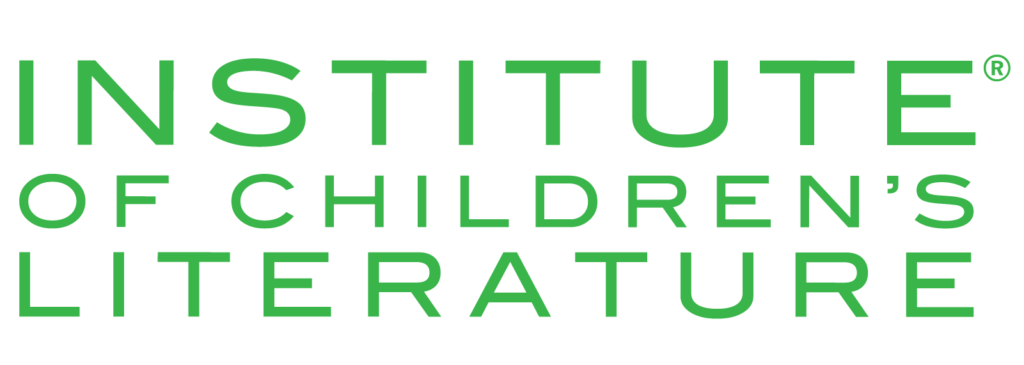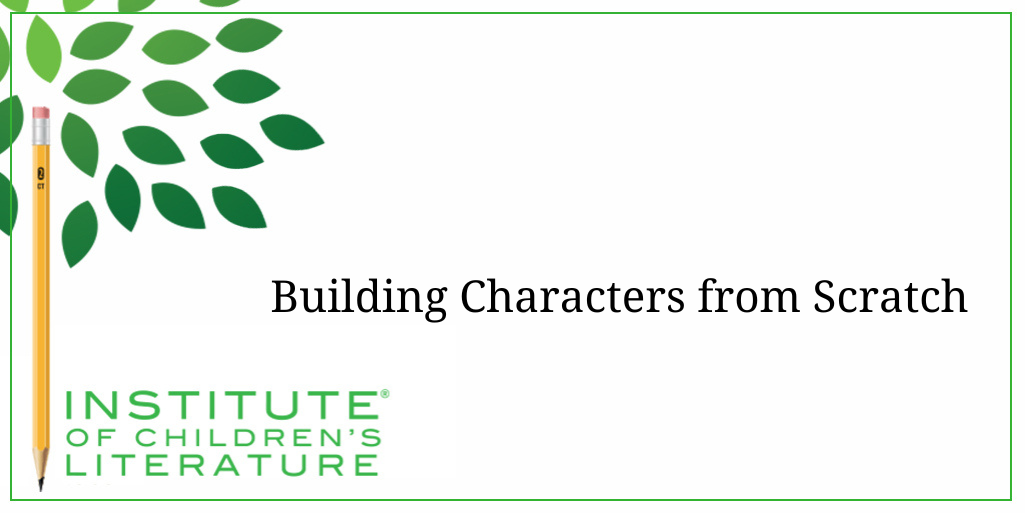
- Date: July 3, 2025
- Author: Jan Fields
- Category: Writing for Children Blog
- Tags: building, character, planning
We teach our students how to write and get published!
View our Course Catalog >
Building Characters from Scratch
People are interested in people. This is true in books as well as in life. Now, “people” is a fluid concept in books since the people who populate books might be animals, or robots, or monsters, but if they are compelling characters, they'll also be people. By that I mean they will use traits, emotions, and behaviors found in people to connect with readers. So, let's look at what you really want to aim for in building your characters. 
Great Characters are Compelling
What does it mean to have a compelling character? A compelling character is interesting. A compelling character grabs the reader's attention. A compelling character makes us want to know more. A compelling character comes with surprises. Now, none of that is about whether the character is a good guy or a bad guy. It's not even about being likable, though we often hear that characters need to be likable and that may be true in specific books for specific ages. But if a character fascinates, we don't need to actually wish we could be friends with them. What we're really talking about with compelling characters is fascination. We are fascinated by compelling characters, even if they aren't people, we'd actually want to get anywhere near in real life.
Compelling Character Are an Imperfect Mix
One of the first things to keep in mind when building compelling characters is that you'll need a mix of positive and negative characteristics. Compelling characters aren't perfect. They aren't all good, but they aren't all bad either. Compelling villains are most interesting when they are not simply all bad. They often have something about that that makes readers relate to them. A villain may love animals, for instance, even if they hate people. A villain my feel their bad choices are being forced on them or are being made for the greater good. A villain may even consider themselves to be a hero.
 A compelling hero won't be all good either. Basically, readers don't tend to relate to perfect people. So, a main character who can only do good things and never even consider making a bad choice is not compelling. Perfect characters or unrealistically powerful characters make for big plot problems because, realistically, a perfect character won't make interesting choices, and an unrealistically strong character will solve the plot problem too quickly. Imperfections in the character actually help create a perfect tale.
A compelling hero won't be all good either. Basically, readers don't tend to relate to perfect people. So, a main character who can only do good things and never even consider making a bad choice is not compelling. Perfect characters or unrealistically powerful characters make for big plot problems because, realistically, a perfect character won't make interesting choices, and an unrealistically strong character will solve the plot problem too quickly. Imperfections in the character actually help create a perfect tale.
Also, imperfect characters and characters with limited power feel more real. Kids are constantly confronted by their own lack of power. They like thinking about being Superman, but what makes a nice daydream isn't going to make a great book most of the time. As for imperfection, keep in mind that doing the right thing should be hard. Readers know how hard it is to make good choices; right choices in real life can be difficult. Sometimes you have to put other people before yourself, which is hard. Sometimes you have to be loyal even if you have doubts, and that is hard too. Sometimes you have to do the brave thing even when you're scared, and that needs to be a struggle for the character, because it would be hard for the reader.
Build In Strengths and Weaknesses
Readers are far more likely to connect with a character based on weaknesses than based on strengths. When readers see characters who have weaknesses similar to their own, and yet overcome and respond to the story challenges, they find the character particularly compelling, and it reminds the young reader that they too can do more than they think. That doesn't mean readers will appreciate a character who has no strengths at all. The problem with that is that the story is going to throw challenges at them that they cannot react well too. Readers want to relate to the main character, but they also want to admire the character.
Choosing the strengths and weaknesses for your character need to be sensible. For instance, an impulsive character (weakness) is often quite brave (positive) because lack of deep thought and planning gives less time for fear to arise. A fearful character is probably one who thinks things through thoroughly (often too thoroughly). A fearful character may also be imaginative, as imagination can bring up possible negative consequences to actions and feed fears. By thinking about how characters develop and how these different traits feed each other will make the final mix of strong and weak much more believable.
If you are someone who writes in a strictly organic way (putting things to paper as they come to you), then you probably don't have a completely fleshed out plot until well after you have created your characters. In that case you need only worry about making a compelling character who has some admirable characteristics and some characteristics that are extremely relatable—and then keep their traits in mind as you write so that your creative mind will build a plot that suits them (hopefully).
But if you are someone who thinks about plot before you begin to build characters, you'll want characters who are suited to the plot you have in mind. For instance, if you are going to need your character to face many difficult situations without hesitation, you're going to need to pick characteristics that support that behavior. If you're creating a character whose story involves needing to go in search of friends, you'll build a character whose strengths and weaknesses support needing friends but having difficulty making them.
When Compelling Characters are Funny
Humor is a great way to get readers to connect with characters. Keep in mind that mean spirited humor doesn't tend to be as relatable, because readers don't tend to admire characters who are intentionally cruel, even if they are being clever. Readers will accept self-deprecating humor but are not usually fond of mean humor. 
For younger readers, humor can often be found in extreme characters, even if they're prone to naughty behavior (as long as it isn't meanness). Extreme characters are funny because they surprise the reader, and surprise is almost always engaging. The pigeon in Mo Willems Don't Let the Pigeon Drive the Bus is funny because he's a pigeon who wants to drive the bus, but also because he mirrors behavior readers can relate to. He wants something very badly. He doesn't see why he can't have it. So, he wheedles and pleads and attempts to bargain, all to gain something he cannot possibly have. He is tenacious and takes that tenacity to the extreme. Another classic funny character, Olivia by Ian Falconer, is funny for similar reasons. Olivia goes her own way. She isn't easy to control. And she clearly sees her own behavior as completely reasonable.
For picture book humorous characters, the best of them work for both children and adults. Children can relate to Max in Where the Wild Things Are because they've also had bad days where they wished they could get away from all the “unfairness” of their life. And adults can relate to Max because they've been both the child and the adult in the story. They sometimes want to escape themselves, but even more, they want to have and to give the safety of home where you are loved and a hot meal waits.
Build Your Own
Remember as you're creating a character that you must give the character something the reader can relate to or admire. You mustn't make them perfect. You should allow them to surprise the reader. And you need the characters and the plot of the story to mesh perfectly, so build the characters that will work in the story you're planning to tell. When you do that, you'll have a compelling character who the reader wants to follow through the story journey, one that lingers in the reader's heart and mind. Do that, and you'll make them real.
Related Articles for Building Characters
With over 100 books in publication, Jan Fields writes both chapter books for children and mystery novels for adults. She’s also known for a variety of experiences teaching writing, from one session SCBWI events to lengthier Highlights Foundation workshops to these blog posts for the Institute of Children’s Literature. As a former ICL instructor, Jan enjoys equipping writers for success in whatever way she can.

